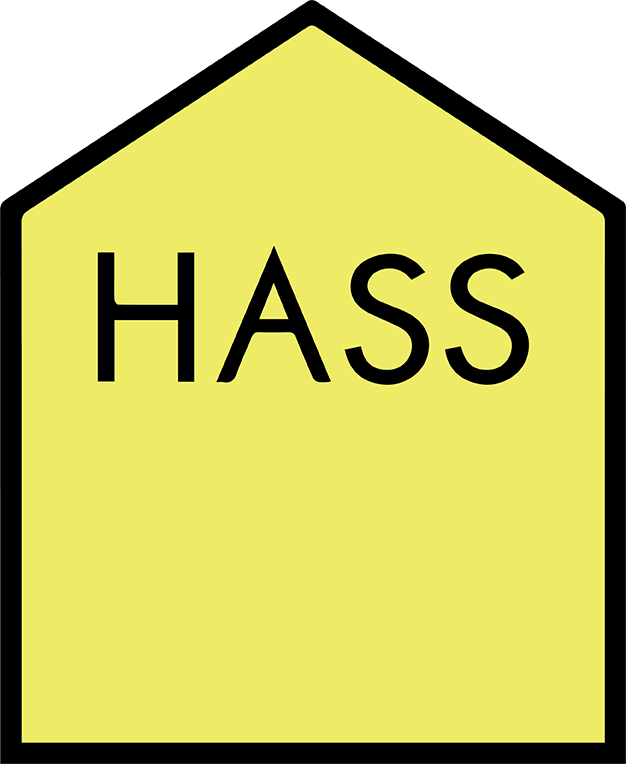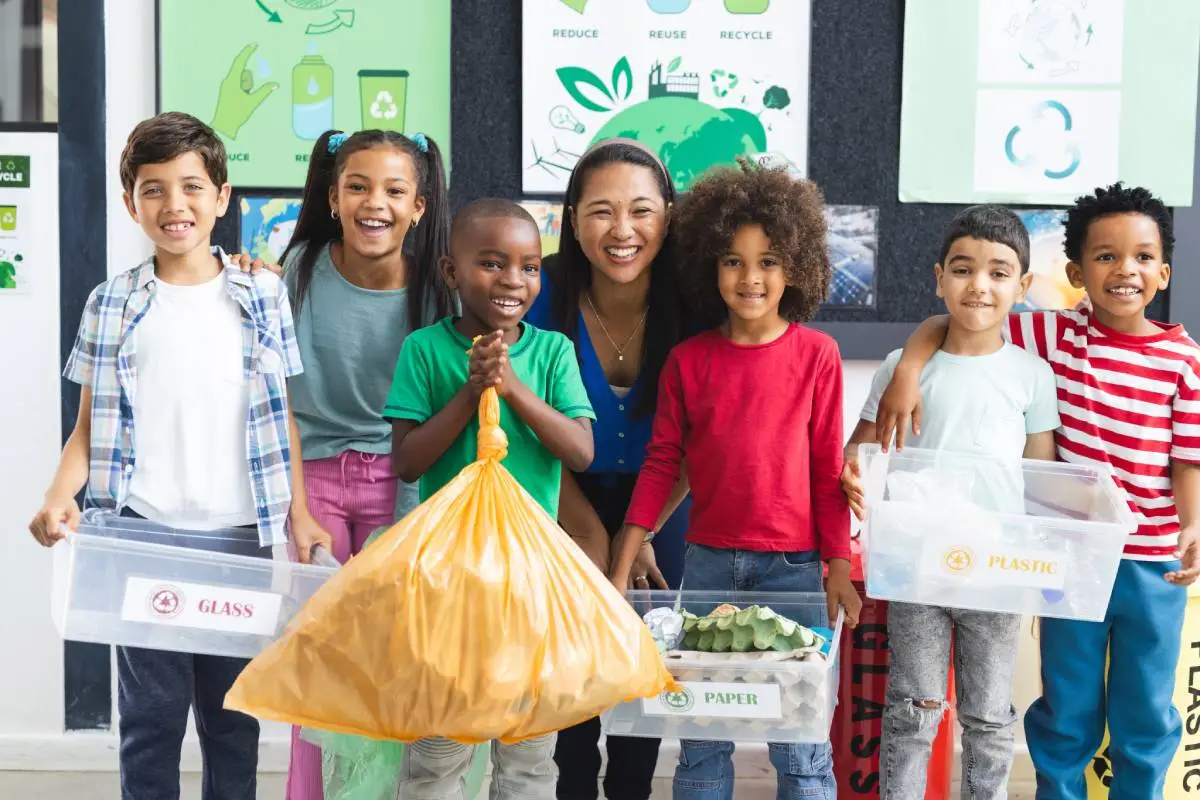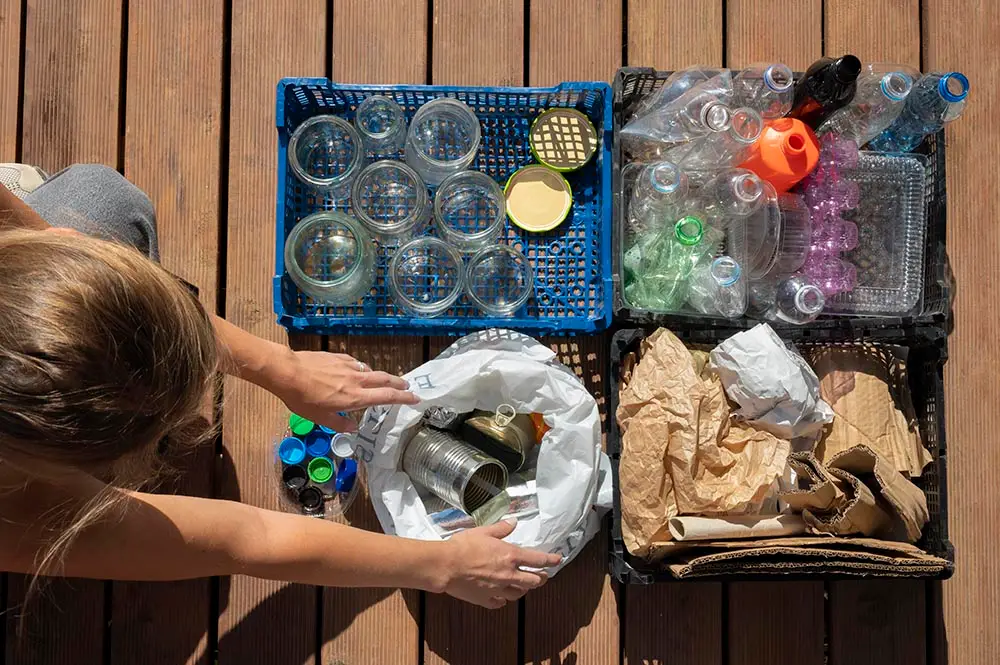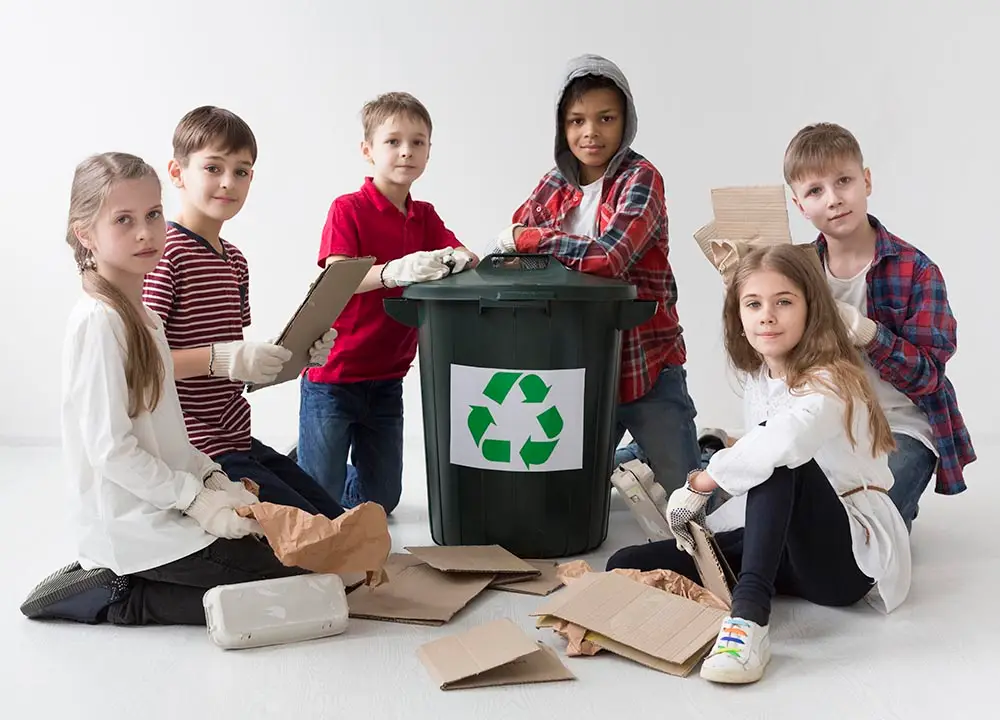Schools are microcosms of society. With hundreds—sometimes thousands—of students and staff gathered in one place daily, schools naturally generate a significant amount of waste. From snack wrappers to notebooks, uneaten food to printer cartridges, the variety of waste is wide-ranging.
Addressing this issue is not only essential for environmental responsibility but also offers an invaluable educational opportunity to instill sustainability practices in younger generations.
In this article, we’ll explore:
- What is the most common waste in schools?
- Where should students dispose of their waste?
- And what proactive steps schools can take to improve waste management—highlighting modern solutions such as HASS Thailand’s Food Waste Composter.
What is the Most Common Waste in Schools?
When we think of school waste, we usually picture overflowing bins in cafeterias or scrap paper in classrooms. But what truly constitutes the bulk of school-generated waste?
1. Food Waste
Food waste is arguably the most prevalent form of waste in schools. Uneaten sandwiches, half-finished milk cartons, and untouched fruits—these items frequently find their way into bins. According to various studies, food waste can comprise 30-50% of all school waste, especially in schools with canteens or lunch programs.
2. Paper Waste
Despite growing digitisation, paper is still heavily used for classwork, exams, homework, and administrative work. Much of this paper ends up in waste bins, even if it’s only lightly used or recyclable.
3. Plastic Packaging
Snack wrappers, plastic utensils, water bottles, and cling film used to wrap lunches contribute to a large portion of plastic waste. These plastics are often single-use and non-recyclable.
4. Cardboard
Cardboard waste comes from delivery boxes, packaging for supplies, and even drink containers. While recyclable, it still adds to the volume of school waste.
5. E-waste (Electronic Waste)
Old projectors, batteries, outdated tablets, and printer cartridges are less common but more hazardous and difficult to dispose of responsibly.
6. General Waste
This includes mixed or contaminated waste, items that could be recycled or composted, but are discarded improperly.
Where Should Students Throw Waste?
Educating students on how and where to throw waste is just as crucial as managing the waste itself. Schools should make it as easy and intuitive as possible for students to do the right thing.
1. Segregated Waste Bins
Implementing clearly labelled and colour-coded bins across the school is the first and most important step.
- Blue bins for paper
- Yellow bins for plastics
- Green bins for compostables (like food scraps)
- Red bins for general waste
- Special bins for batteries or electronics
These bins should be placed in key areas:
- Cafeterias and canteens
- Classrooms
- Hallways and common areas
- Outside near sports grounds
2. Signage and Instructions
Bins should have clear labels with pictures showing what goes in each bin. Students of all ages—including younger children and non-native speakers—should be able to understand.
3. Composting Stations
To combat food waste, schools should install composting bins or, even better, invest in machines like HASS Thailand’s Food Waste Composter, which can efficiently process food scraps into compost or biofertilizer. These machines reduce landfill-bound waste and allow schools to use the resulting compost in gardens or donate it to local farms.
What Can Schools Do to Improve Waste Management?
Tackling waste management in schools doesn’t stop at putting out a few bins. It involves creating a culture of awareness, responsibility, and sustainability.
Here are the most effective strategies:
1. Waste Audit
Start by understanding the type and quantity of waste your school generates. Conduct a waste audit by:
- Collecting and sorting waste from all school zones
- Measuring each type of waste
- Identifying patterns and problem areas
This helps in setting realistic targets and tailoring solutions.
2. Composting Food Waste with HASS Thailand’s Food Waste Composter
One of the most forward-thinking strategies is turning food waste into a resource. HASS Thailand’s Food Waste Composter is a compact yet powerful solution designed for institutions like schools.
Benefits include:
- Reduces food waste volume by up to 90%
- Eliminates odour using built-in deodorisation features
- Produces compost in a matter of hours or days
- Easy to use
- Educational opportunity: Students can learn about composting, microbiology, and sustainability
By integrating the composter into the school’s environmental science curriculum, it becomes more than a machine—it becomes a living lesson.
3. Paper Reduction Initiatives
- Encourage double-sided printing and reuse of single-sided sheets
- Go digital where possible: use learning management systems (LMS) for assignments and notes
- Place “scrap paper” trays in each classroom
4. Plastic Elimination Policies
- Ban or limit the use of single-use plastics
- Encourage students to bring reusable water bottles and lunch containers
- Partner with canteens to replace plastic cutlery with compostable or reusable alternatives
5. Recycling Programs
Coordinate with local recycling companies to pick up paper, plastics, and e-waste. Provide collection points for batteries, electronics, and printer cartridges.
6. Green Curriculum
Incorporate environmental education into lesson plans. Teach students about:
- Environmental impacts of waste
- Recycling processes
- Sustainable consumption
- Climate change and landfill methane emissions
Field trips to recycling plants or composting facilities can make the lesson more engaging.
7. Student Engagement
Appoint Eco Leaders or Green Ambassadors in each class to monitor proper waste disposal and help with sustainability projects.
Create inter-class or inter-grade competitions:
- Which class generates the least waste?
- Who recycles the most paper?
- Who creates the best “upcycled” art project?
8. Involve Parents and Community
Good habits start at home. Send newsletters or host workshops for parents about the school’s waste policies and how they can contribute.
Coordinate with local councils, environmental groups, or waste management experts for seminars and support.
9. Canteen Overhaul
- Audit the canteen for packaging waste
- Replace plastic packaging with biodegradable options
- Encourage healthier meals with fewer leftovers
- Weigh and display daily food waste data to raise awareness
10. Monitor and Adjust
Once waste management programs are in place, schools must regularly:
- Monitor progress
- Adjust strategies based on new challenges
- Celebrate milestones (e.g., “1 ton of waste composted!”)
Feedback from students and staff can guide further improvements.
Why Waste Management in Schools Matters
School waste isn’t just an operational issue—it’s a learning opportunity and a moral responsibility. By reducing waste and promoting sustainability, schools are:
- Lowering their environmental footprint
- Saving on waste disposal costs
- Modelling responsible behaviour
- Preparing students to become environmentally conscious adults
Moreover, children are naturally curious and responsive to change. When engaged effectively, they can lead powerful sustainability movements at school and beyond.
Final Thoughts
Managing school waste doesn’t have to be overwhelming. With the right tools, education, and community engagement, any school can make meaningful changes. Whether it’s installing a recycling station, banning single-use plastics, or adopting HASS Thailand‘s Food Waste Composter, every step counts.
Educating students on how to handle waste properly and why it matters can have a lasting ripple effect, creating environmentally responsible citizens for the future.
Now is the time for schools to not only teach subjects from textbooks but to live and breathe sustainability through action. The planet—and the next generation—deserve nothing less.





